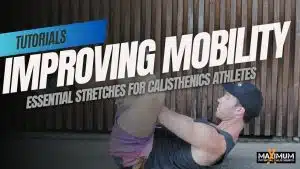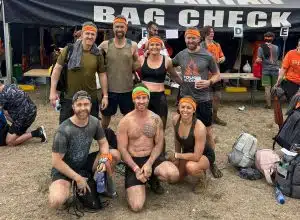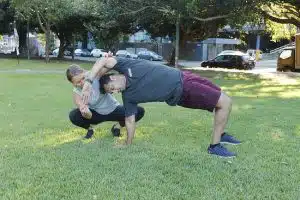The push-up is probably one of the most recognised bodyweight exercises.
However, many people focus on quantity rather than quality with their push-ups.
This is a mistake, to get true strength, we should concentrate on getting perfect form from the push-up.
This guide will detail push-up progressions for beginners.
Remember, focus on your form to get the most out of the exercise.
[embedyt] https://www.youtube.com/watch?v=uXKq1S8uj6Y[/embedyt]
Push-up Form
Here are a few pointers to look out for when performing your push-ups:
Elbow Position
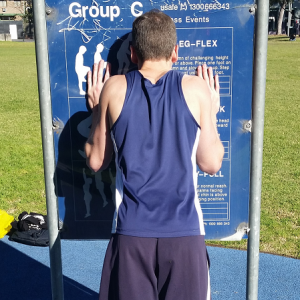
One of the most common mistakes I see when people perform push-ups is to flare their elbows out to the side.
This put your arms in an awkward position, which under load can strain the rotator cuff; ensure that your elbows go back and as close to the body as you can.
Keep Your Body Straight
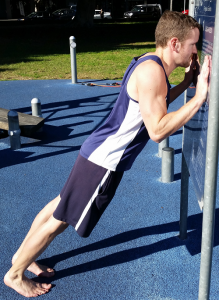
Your entire body should be in a straight line from head to toe, throughout the movement; if you fail to do so then regress the exercise and try again.
Full Range of Motion
Another common mistake that I see with push-ups is not getting full range of motion.
So what is full range of motion?
The exercise should start with straight arms (don’t lock the elbows), you should not push back up until you can’t go any lower.
With wall push-ups that may be limited by your head as in the picture above.
For a full push-up that is not until your chest or nose touches the floor.
Cadence
For strength training you should keep a cadence of 2-1-2.
That is 2 seconds down, 1 second hold at the bottom, then 2 seconds back up.
Breathing
During the eccentric phase (lowering yourself to the ground), take a deep breath in, try to breath with your stomach rather than your chest as this will engage your diaphragm, intercostals and abdominal muscles to get more strength from your core.
Begin your exhale at the same time as you begin the concentric phase (pushing yourself back up to start position).
Muscles Worked
Primary
Pectoralis major
Triceps brachii
Secondary (Synergist)
Deltoid anterior (front)
Stabilisers (Fixators)
Rectus abdominis
Obliques
Pectoralis minor
Serratus anterior
Quadriceps
Gastrocnemius
Soleus
Progression / Regression
You should start this exercise with your feet as close to the wall as you require to be able to get full range of motion.
Once you can complete the required number of sets and reps, you should make it more difficult.
If you fail to complete a perfect form push-up at the current incline, then regress the exercise.
Why Not Knee Push-ups?
One way of progressing to a full push-up is to do them on your knees first, however in this position your knees are supporting your mid-section.
Therefore, it works your core muscles less, thus making the switch to full push-ups a bit more tricky.
If however, you can’t find a suitable height to progress to, then knee push-ups are an acceptable alternative.
Height of Incline
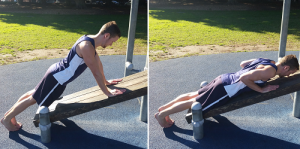
Decreasing the incline of your push-ups will start to put more weight through the arms, thus making it more difficult.
If you start against a wall, you will eventually find your head starts to get in the way, in this case you should find a lower object to put your hands on, such as a table.
Width of Gap Between Feet
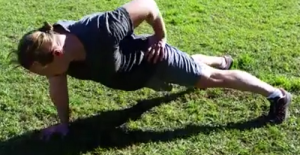
In the picture above you can see that Andres is spreading his feet quite wide to help assist with his one arm push-ups, by doing this the body is more stable and the load is better spread through the legs.
Whilst this has less affect for incline push-ups, it can be a useful tool to get to a lower height if you’re struggling with your feet together.
Range of Motion
As previously stated, if you can’t perform the full range of motion, you should make it easier.
However, for your last few reps or the last set or so, it is acceptable to work with a decreased range of motion.
Don’t progress until you have done all reps over the full range of motion.

